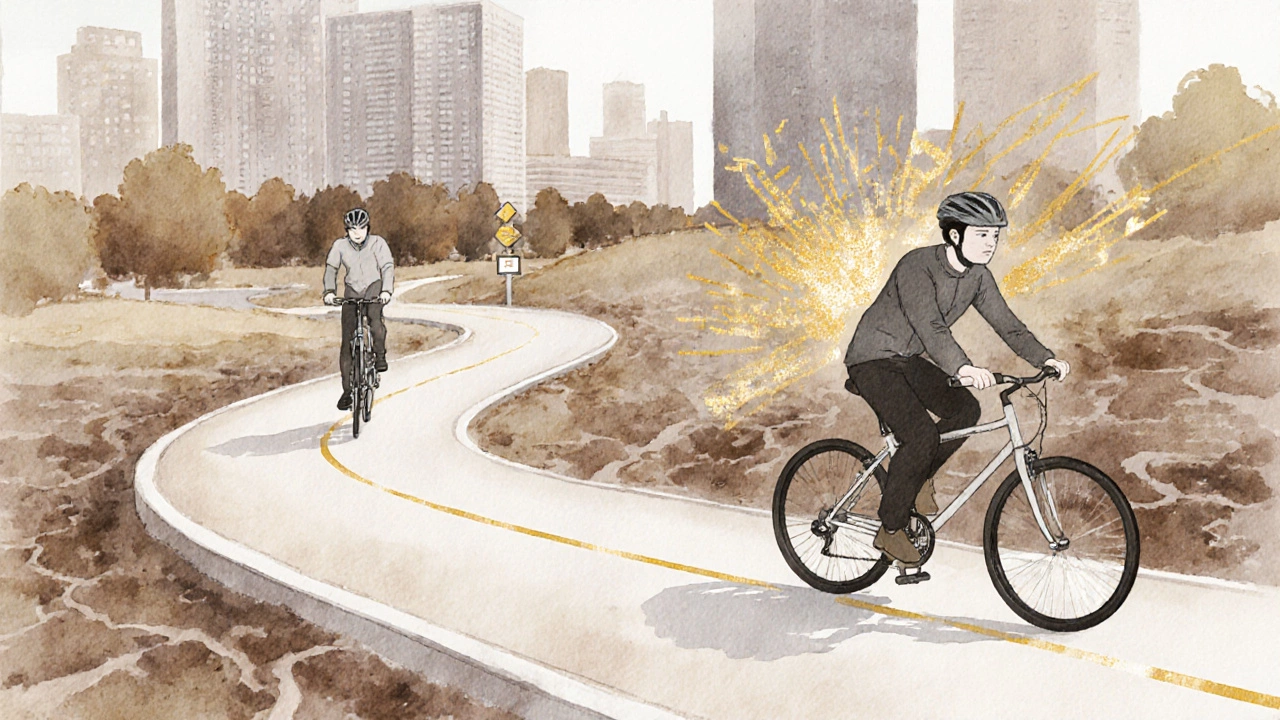
Employee Retention Cost Calculator
Calculate the financial impact of employee turnover based on your organization's current retention rates. This tool uses data from the Australian Institute of Management study showing companies with structured personnel development programs have 34% higher retention rates.
Financial Impact Analysis
Current Turnover Cost:
Potential Savings:
34% higher retention rateKey Insight: This tool demonstrates the business case for personnel development. Companies with structured development programs have 34% higher retention rates, reducing turnover costs significantly.
When you hear the word personnel development, you might think of fancy workshops, corporate jargon, or HR departments handing out certificates. But real personnel development isn’t about paperwork. It’s about helping people grow in their jobs - not just to do their current role better, but to take on more, learn faster, and feel more valued. It’s the quiet engine behind companies that keep thriving while others stall.
Personnel Development Isn’t Just Training
Many people mix up personnel development with training. Training teaches you how to use a new software or follow a safety rule. Personnel development goes deeper. It’s about building skills that last - critical thinking, emotional intelligence, leadership, adaptability. It’s what happens when someone moves from following instructions to solving problems they’ve never seen before.
Think of it like learning to ride a bike. Training shows you how to pedal and brake. Personnel development teaches you how to balance on uneven roads, navigate traffic, and choose the best route - even when the map changes. Companies that invest in this kind of growth don’t just get better workers. They get loyal ones.
Why Companies Care About Personnel Development
It’s not charity. It’s strategy. A 2024 study by the Australian Institute of Management found that organizations with structured personnel development programs had 34% higher employee retention rates than those without. That’s not a small number. Replacing a single mid-level employee can cost up to 1.5 times their annual salary in recruitment, onboarding, and lost productivity.
When people feel like they’re growing, they stick around. They bring ideas. They mentor others. They don’t wait to be told what to do - they see where things could improve and act. That’s the kind of energy that turns good teams into great ones.
What Does Personnel Development Look Like in Practice?
It doesn’t always mean going back to school. In fact, the most effective development happens right where people work. Here are a few real examples:
- A retail supervisor in Melbourne gets paired with a senior manager for monthly one-on-ones to discuss decision-making, not just sales targets.
- A junior IT support worker in Sydney is given a small project to lead - not because they’re ready, but because someone believes they can grow into it.
- A warehouse team in Brisbane starts rotating roles every quarter so everyone understands the whole process, not just their own station.
These aren’t HR initiatives. They’re daily choices - by managers, by teams, by leaders - to give people space to stretch. The goal isn’t to make everyone a manager. It’s to make everyone more capable, more confident, and more connected to the work they do.
The Four Pillars of Effective Personnel Development
Successful programs don’t rely on one-off workshops. They’re built on four consistent practices:
- Feedback that sticks - Regular, specific, and kind. Not annual reviews. Weekly check-ins where people hear what they’re doing well and where they can improve.
- Challenging assignments - Giving people tasks just outside their comfort zone. Not so hard they fail, but hard enough to force growth.
- Access to learning - Not just online courses. Real access to mentors, books, shadowing opportunities, and time to reflect.
- Recognition that matters - Celebrating progress, not just results. Did someone handle a tough client better? Did they help a teammate? Say it out loud.
These aren’t fancy systems. They’re habits. And habits, repeated over time, change cultures.

What Happens When You Skip Personnel Development?
Companies that treat staff like replaceable parts end up with disengaged teams. People stop speaking up. They do the bare minimum. They wait for instructions. Turnover climbs. Morale drops. And the worst part? It’s not because employees are lazy. It’s because they feel stuck.
In one Sydney-based logistics company, managers noticed high turnover among drivers. Instead of blaming the workers, they asked: "What’s missing?" The answer? No path forward. Drivers felt like they’d hit a ceiling. So the company started offering routes to become dispatch coordinators or safety trainers - roles that used their experience but gave them new challenges. Turnover dropped by 40% in six months.
Personnel Development Is Personal
One size doesn’t fit all. What helps a 22-year-old new hire might not help a 45-year-old team lead. Effective development respects individual goals.
Some people want to climb the ladder. Others want to master their craft. Some want flexibility. Others want impact. Good personnel development doesn’t force everyone onto the same path. It helps each person find their own.
That means managers need to listen - not just talk. Ask: "Where do you see yourself in two years?" Then actually pay attention to the answer. Build a plan around it, even if it doesn’t match the company’s official career ladder.
It’s Not Just for Employees
Personnel development isn’t only about the people doing the work. It’s also about the people leading them. Managers who never learn how to coach, give feedback, or handle conflict become bottlenecks. Their teams stagnate.
Leadership development is part of personnel development. If your manager hasn’t had training on how to support growth, they can’t help you grow. That’s why the best companies invest in developing their leaders - not just their staff.

How to Start If You’re Not in HR
You don’t need a budget or a title to start developing people. Here’s how:
- Ask a colleague: "What’s one thing you’d like to get better at?" Then help them find a resource or introduce them to someone who knows how.
- Share a book, article, or podcast that helped you - no strings attached.
- Volunteer to mentor someone new. Even an hour a month makes a difference.
- If you’re a manager, stop asking "Did you finish the task?" Start asking "What did you learn doing it?"
Small actions, repeated, build cultures of growth. You don’t need permission to help someone grow. You just need to care enough to try.
Personnel Development Is a Long Game
There’s no quick fix. You won’t see results after one workshop. It takes months, sometimes years. But the payoff is real: teams that adapt, solve problems, and stay together through change.
It’s not about ticking boxes. It’s about creating environments where people feel safe to learn, fail, and try again. That’s the true meaning of personnel development - not a program. A promise. To every person who shows up to work: "You matter. You can grow. We’re here to help."
Is personnel development the same as employee training?
No. Employee training teaches specific skills for a current task - like how to use a new software or follow a safety procedure. Personnel development focuses on long-term growth: building critical thinking, leadership, adaptability, and confidence. It’s about preparing people for future roles and challenges, not just fixing today’s gaps.
Does personnel development only apply to large companies?
No. Small businesses often have the advantage here. With fewer layers, it’s easier to notice when someone is ready for more responsibility. A local café might let a barista start managing shifts. A small design firm might let a junior designer lead a client meeting. Growth happens where there’s trust - not size.
Can personnel development help with burnout?
Yes. Burnout often comes from feeling stuck or unseen. When people have clear paths to grow, even in small ways, they feel more in control. Learning new skills, taking on meaningful projects, or being recognized for effort can restore motivation. Development gives people purpose beyond just completing tasks.
What’s the biggest mistake companies make with personnel development?
Treating it like a one-time event. A single workshop, an annual review, or a mandatory online course won’t cut it. Real development happens through ongoing conversations, consistent feedback, and real opportunities to stretch. It’s a rhythm, not a program.
How do I know if my organization’s personnel development efforts are working?
Look at retention, internal promotions, and employee feedback. If people are staying longer, moving into new roles without external hires, and saying they feel supported in growing - that’s proof. Numbers matter, but so do the quiet signs: more questions in meetings, more ideas being shared, fewer people saying "I’m just doing my job."
Next Steps: Where to Begin
If you’re in a leadership role, start by asking your team one simple question: "What’s one thing you’d like to learn or try this year?" Write down the answers. Don’t promise everything. But find one thing you can support - a book, a short project, a meeting with someone else in the company.
If you’re an individual contributor, don’t wait for someone to give you a plan. Take charge. Find someone you admire in your company and ask if they’d be willing to grab coffee once a month. Read one article a week on leadership or communication. Keep a small journal of what you’ve learned.
Personnel development doesn’t require a budget. It requires attention. And the most powerful thing you can give someone is the belief that they can grow - and the space to prove it.


